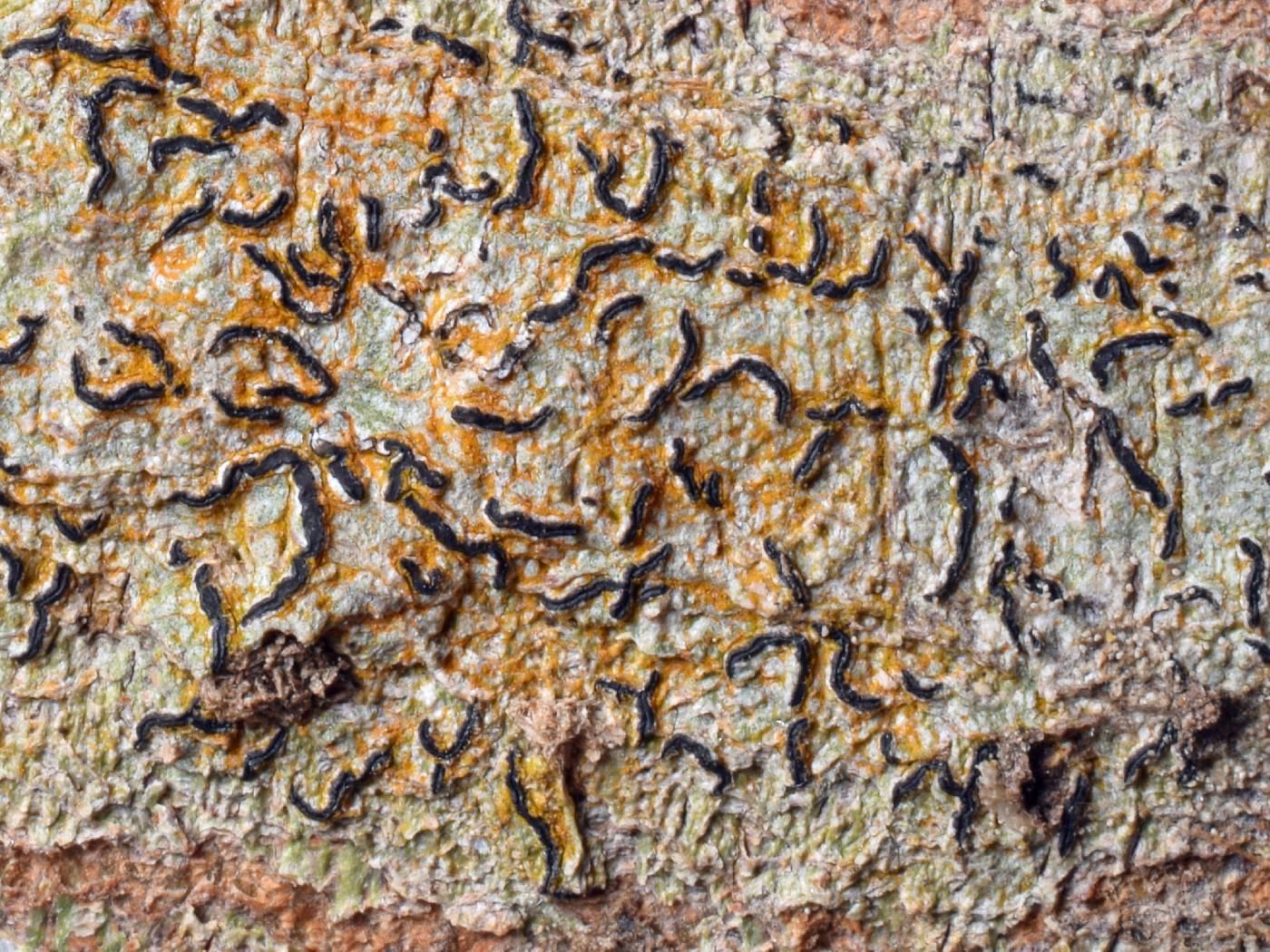
Consortium of Lichen Herbaria
- building a Global Consortium of Bryophytes and Lichens as keystones of cryptobiotic communities -
- Home
- Search
- Images
- Species Checklists
- US States: O-Z >
- US National Parks
- Central America
- South America
- US National Parks
- Southern Subpolar Region
|
Family: Graphidaceae |
Nash, T.H., Ryan, B.D., Gries, C., Bungartz, F., (eds.) 2004. Lichen Flora of the Greater Sonoran Desert Region. Vol 2. Life habit: lichenized Thallus: crustose, continuous, rimose to somewhat areolate surface: white, pale gray or cream-colored, dull, rarely pale yellow to olive-green, uneven to slightly rugose, often slightly cracked, without soralia or isidia cortex: present, mostly composed of ±periclinal hyphae medulla: white, often with large crystals photobionts: primary one a Trentepohlia green alga, secondary one absent Ascomata: apothecial, lirellate, often flexuous and branched disc: usually dark brown, slit-like or ±open, smooth, often with whitish pruina margin: excipular lips carbonized (at least apically) ±convergent, entire or striate, often (at least partly) with a thalline cover, sometimes whitish pruinose (in G. chrysocarpa with a conspicuous orange pruina), rarely completely naked exciple: carbonized (at least partially), excipular base varying from rudimentary to well developed and not carbonized or distinctly carbonized, with lateral exciple and excipular lips ±convergent, entire or with ±distinct striae due to multiple regenerations of the ascocarp hymenium: hyaline, inspersed or not, 60-300 µm tall, I-, rarely lateral parts I+ pale blue; paraphyses: parallel, tips often pale brown, weakly branched or not branched, rarely hyaline and not differentiated asci: clavate, I-, apex thickened with ±distinct ocular chamber ('Graphis-type'), 1-8-spored ascospores: hyaline, rarely pale brown (brown spores are usually degenerated), transversely septate with lenticular spore locules, submuriform or muriform, oblong with rounded ends, rarely fusiform, 15-250 x 5-50 µm, I+ blue-violet Conidiomata: pycnidial, rarely present, immersed in small thalline warts (c. 0.1 mm in diam.), with brownish ostioles conidia: oval to bacilliform, formed acrogenously, conidiophore-type II (Vobis 1980), 1.5-6 x 1 µm Secondary metabolites: none detected in most species but several ß-orcinol depsidones and/or lichexanthone found in a few species Geography: predominately tropical to subtropical with a few species extending to temperate regions Substrate: mostly on bark, rarely on rocks or other substrates (detritus or mosses). Notes: The genus Graphis is characterized by its black, ±elongate apothecia with entire or distinctly crenate to striate excipular lips and often narrow, slit-like, rarely open discs. The ascospores are hyaline, transversely septate or muriform, I+ blue-violet. Glyphis montoensis is very similar but can be separated by a different paraphyses-type (±thick-walled, with thick, jelly-like walls and brown granular tips) and open cinnamon-brown, granular discs. |
Powered by Symbiota









